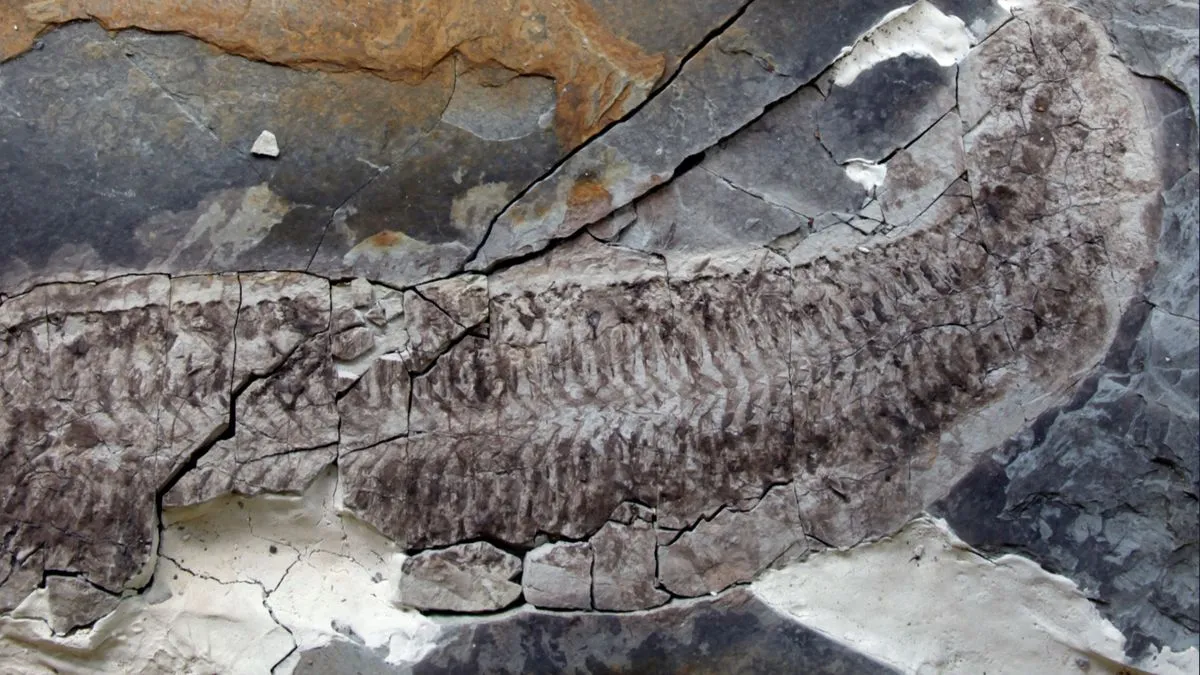
In an exciting breakthrough for paleontology, scientists have discovered two specimens of a 444 million-year-old fossil featuring remarkably preserved soft tissue. This recent study, published on March 26 in the journal Papers in Palaeontology, reveals a new species of multisegmented arthropod that lived in ancient oceans. Unlike typical fossils, which often preserve harder parts like shells, these specimens showcase the creature's muscles, guts, and other soft tissues, providing a rare glimpse into life during the Late Ordovician period.
The fossilized remains were unearthed 250 miles (402 kilometers) north of Cape Town, South Africa, in the renowned Soom Shale formation. This site is famous for yielding fossils with well-preserved soft tissues, enabling researchers to study the anatomy and biology of ancient creatures in unparalleled detail. Despite efforts to locate additional specimens over the past two decades, fossils of this particular species have proven to be quite rare.
The newly identified species has been named Keurbos susanae and affectionately nicknamed "Sue" in honor of the discoverer's mother. Lead author Sarah Gabbott, a paleontologist at the University of Leicester in the U.K., described Sue as an "inside-out, legless, headless wonder." What makes this fossil particularly intriguing is the mineralized preservation of its insides, including muscles, sinews, and even guts, captured with stunning detail. However, the fossil's durable carapace, legs, and head have eroded away, lost to the ravages of time over 440 million years.
The sedimentary environment that preserved Sue provides valuable insights into its lifestyle. The ancient seafloor where Sue was found existed in an oxygen-poor environment characterized by high levels of dissolved, acidic hydrogen sulfide. This suggests that Keurbos susanae may have been specifically adapted to thrive in low-oxygen waters, a hypothesis supported by the conditions prevalent during the Late Ordovician mass extinction.
Researchers are keen to unravel the evolutionary history of Keurbos susanae, although many questions remain unanswered. The fossil's segmented trunk implies that it possessed limbs, but the absence of part of its exoskeleton complicates comparisons with other known species from the same era. Gabbott noted, "We are now sure she was a primitive marine arthropod, but her precise evolutionary relationships remain frustratingly elusive." Ongoing studies aim to determine how soft tissues in fossils like Sue are preserved, with clay minerals and calcium phosphate potentially playing significant roles.
Recent quarrying activities have buried the site where Sue was discovered, casting doubt on the chances of finding additional specimens, particularly those with intact limbs or head structures. Gabbott expressed a mix of hope and resignation, stating, "I'd always hoped to find new specimens, but it seems after 25 years of searching this fossil is vanishingly rare." The desire to honor her mother led Gabbott to name the fossil after her, humorously remarking on the importance of preserving both fossils and family legacies.
As researchers continue to investigate the rich tapestry of ancient life, the discovery of Keurbos susanae adds a fascinating chapter to our understanding of marine arthropods and their evolution in a time long past.